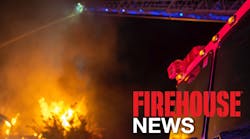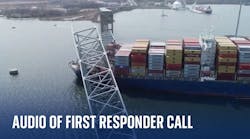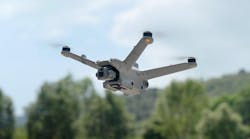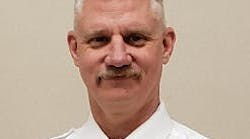Specific technologies that evolved for a number of years but were not immediately available to the fire service include thermal imaging, radio communications, global positioning systems (GPS), digital identification/tracking systems for personnel, digital mapping and virtual reality simulations, to name a few.
Thermal imaging technology was developed by the military. When thermal imaging became available to the fire service, the early devices were large, awkward, heavy, expensive and already obsolete in the eyes of the military. Today, the military has elaborate simulators that allow for extensive planning prior to an attack by air, sea or ground. Imagine having the ability to put incident commanders and fire officers into simulations that would have been unthinkable before Sept. 11.
On the television program “Nightline,” International Association of Fire Chiefs (IAFC) President John Buckman stated his concerns to Ted Koppel by saying, “For over six years, the fire service has requested a mask that was approved by NIOSH (National Institute for Occupational Safety and Health) for chemical attacks. To date, that mask still does not exist.” While this is not an overwhelming task for technology, it points out where the basic needs are not being met. Great technological breakthroughs sometimes mean nothing when the basic physiological protections are not in place.
There is hope and support rising in Congress and from federal agencies, but as Hal Bruno has stated so many times, the fire service must join collectively to keep this momentum moving forward and not let the fire service be forgotten. The first signs of successful recognition have been seen through what appears to be increases in the FIRE Act grant to the tune of $210 million in increased funding.
Another encouraging sign was evident in remarks made by Christie Whitman, administrator of the Environmental Protection Agency (EPA), at an EPA Preparedness Conference in December 2001. Whitman sent a very clear message of cooperation, support and open dialogue between the federal agencies and first responders. “First, our greatest line of defense in the event of a chemical emergency are local responders,” she said. “The EPA is committed to insuring those on the front lines continue to have the tools, the resources and expertise they need in order to limit risks and accidents in chemical emergencies. We are committed to being your active partner.”
At the same conference, a warning about “dirty bombs” and “suitcase nukes” was sounded by the Congressman Curt Weldon (R-Pennsylvania). Weldon expressed his support for technology and the fire service by saying, “The military has digitized our military by equipping every soldier with a transmitter. We have not only developed a prototype that will not just tell you where the soldier is on the battlefield, but will also give you that soldier’s vital signs.”
To explore further, other military reports have revealed that this digitized information also indicates the location of every piece of armament, every firing of a weapon and more. Weldon exclaimed, “WHY HASN’T THAT TECHNOLOGY AND OTHER TECHNOLOGIES MADE IMMEDIATELY AVAILABLE TO OUR DOMESTIC RESPONDERS?” and went on to say, “When technology is developed for our military, our international defenders, that same technology must immediately be available to our domestic defenders … The first responders are not going to be the National Guard, the Marines or the EPA. The first responder is always going to be fire, EMS or law enforcement (department that) arrives first. We must give you the tools and resources that you need to deal with the threats in your states, cities and towns. To do anything less would be a disservice. The awareness is there. Now its time for us to respond.”
Technology focuses certainly have changed and new issues raised since Sept. 11. While some things change, other concerns remain. Technology issues that remain the same include funding for research and development for improvements to personal protective equipment (PPE), radio communications, thermal imaging, self-contained breathing apparatus (SCBA), fire suppression agents, and chemical and biological monitoring devices.
The best technology, along with research and development, must be available to enable the fire service to effectively and safely defend our homeland with new and improved PPE that will address chemical, biological and radiological threats. Not an easy task. The idea suggested by Weldon is promising – new technology that provides instantaneous and precise digital accountability and tracking of firefighters working at an emergency scene would be a monumental improvement.
As far as technology thoughts for the future, here are a few for everyone to cogitate on:
Personal Protective Equipment
- Personal alert safety system (PASS) devices with wireless technology linked to portable radios that can automatically send out an emergency signal to the incident commander and to dispatch while simultaneously providing precise digital locations, vital signs, etc.
- Diagnostic systems that could be applied to an EMS patient or a firefighter to provide wireless digital information transfer to a centralized system both locally (on scene) and remotely to a records-management system and hospital.
- Development of remote sensing devices for chemicals (both common and chemical warfare agents). This device would allow for atmospheric sensing by first responders at safe distances.
- SCBA facepiece heads-up displays that show a user available air, external temperature and thermal image capability and that has built-in external sensing devices for chemical, biological and radioactive exposures.
- Development of new materials for PPE that are more pliable, more durable, less likely to accumulate products of combustion, easy to decontaminate and help to maintain safe body temperatures while operating in extreme heat and extreme cold environments.
Radio Equipment
- Portable radios equipped with precise locator capabilities to locate personnel and to perform automatic PAR ID, alert and status.
- A national emergency radio communications system that would allow for multiple agency response and interoperability across agency/jurisdictional boundaries.
- Palm-like technology built into portable radios that would allow for digital transmission of work being done in the field such as EMS information, fire prevention inspections, and life safety and other code enforcement.
Vehicles & Apparatus
- Intelligent vehicle devices such as anti-crash devices that utilize radar-like technology to warn drivers of approaching vehicles and obstacles. The same could be applied to rear of vehicle to prevent movement of vehicle with a person or obstacle in its path.
- Thermal image display options available on fire apparatus windshields (like Cadillac) to provide visibility in brushfire situations and to see people, animals or other obstacles when responding on rural incidents during poor- or zero-visibility environments such as smoke, fog and at night.
- Built-in monitoring sensors on fire apparatus for automatic detection of chemical, biological and radiological agents that would warn emergency personnel that they have entered a dangerous environment.
Physical Fitness
- In-station physical fitness equipment that would provide for aerobic conditioning while also monitoring for potential physiological problems.
Keep in mind that the fire service’s visibility is very high now, but as life returns to the normal that we are accustomed, that support and funding may quickly disappear. For that reason, it is imperative that everyone send a loud and clear message to your local, state and national elected officials requesting their support for the funding that is so desperately needed by the fire service.
The opportunity has never been greater for the fire service to be heard. Please take a moment to send letters expressing your request that fire service funding be supported in a major way. The firefighters who made the ultimate sacrifice on, before or after Sept. 11 stand as an everlasting flame which symbolizes fire service commitment to our nation and serve as a never-diminishing reminder to elected officials for the need and importance of their support.
Charles Werner, a Firehouse® contributing editor, is a 24-year veteran and deputy chief of the Charlottesville, VA, Fire Department. He is a member of the Firehouse.com webteam and recently became the editor of the new Firehouse.com Technology Zone. Werner serves on the International Association of Fire Chiefs (IAFC) Technology/Communications Task Force and is chair of the State Fire Chiefs Association of Virginia (SFCAV) Technology Committee. He is the webmaster for the SFCAV, the National Fire Academy Alumni Association, the National Fire Service Incident Management System Consortium and the International Association of Wildland Fire.




